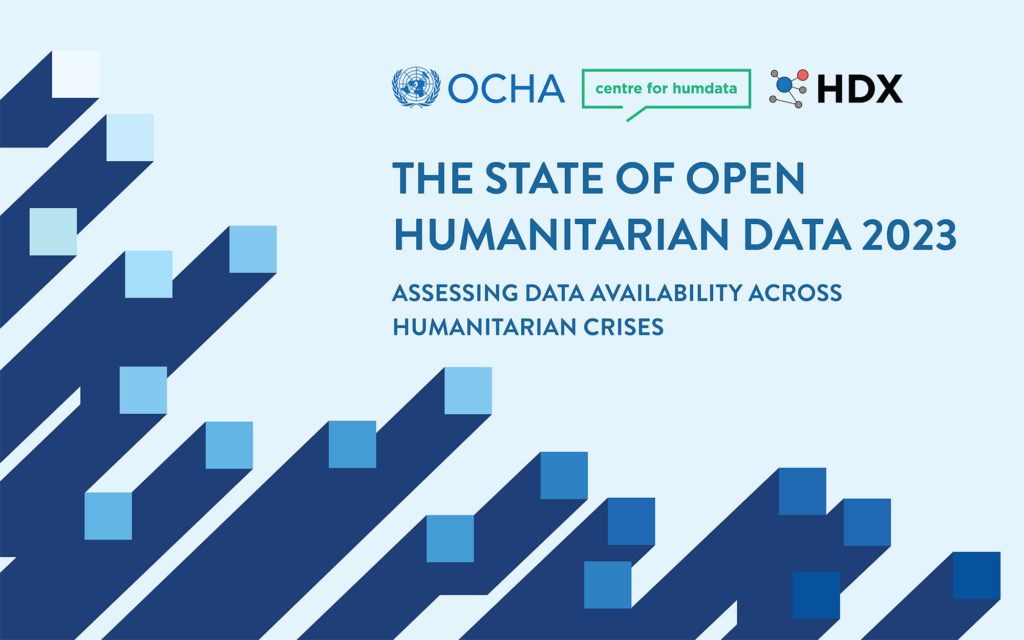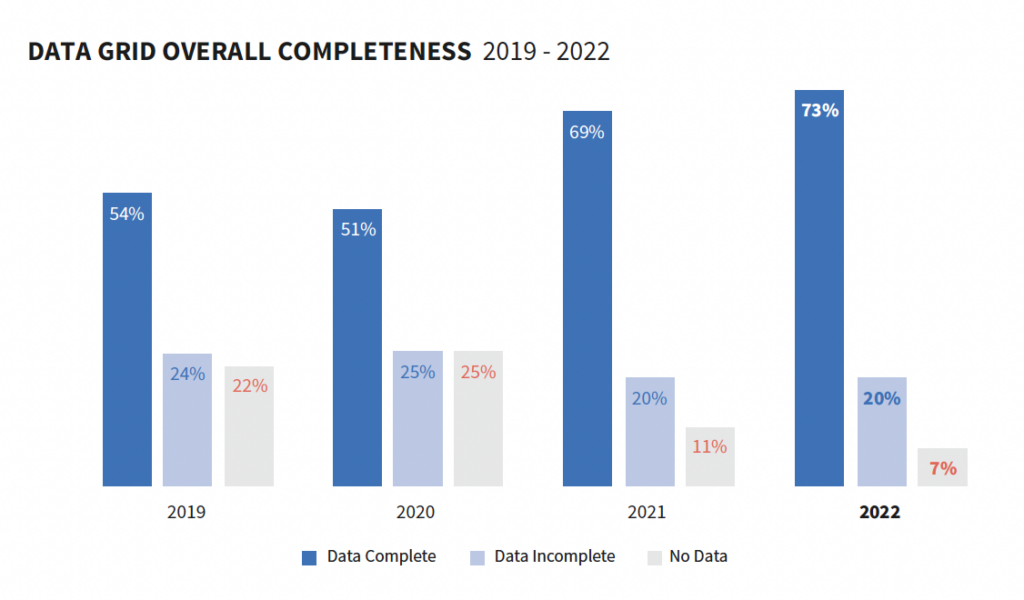Share
In our fourth year of producing The State of Open Humanitarian Data, we can report the highest levels yet for data availability across priority humanitarian operations. These gains can be attributed to the commitment of organizations to sharing and maintaining their data publicly. There was also strong demand for data about the world’s largest humanitarian crises, from the war in Ukraine to drought and food insecurity in the Horn of Africa.
Our understanding of data availability and use comes from managing the Humanitarian Data Exchange (HDX), an open platform for finding and sharing data across crises and organizations. Although HDX includes data about all countries in the world, our report focuses on 25 locations with humanitarian response plans. This analysis is based on the HDX Data Grids, which provide a comparable way to assess data availability across locations and categories.
The State of Open Humanitarian Data 2023 contains details on the data available for each location, category and sub-category covered in 25 Data Grids. It includes a country deep-dive for South Sudan and showcases the work of the Humanitarian OpenStreetMap Team (HOT) on community mapping. It also provides examples of how climate impact data is being used to predict the impacts of a hazard on lives and livelihoods and trigger actions to mitigate them.
Since 2019, when the Data Grids were first introduced on HDX, we have seen an increase in data completeness from 54 percent to 73 percent. The categories with no data have fallen from 22 percent to 7 percent. In 2022, South Sudan, Afghanistan and Somalia had the most complete Data Grids. Venezuela, Syria and Libya were the countries with the largest data gaps.
A priority for 2023 will be a continued focus on climate impact data. We will also explore implementing data quality grades or scores for some datasets included in the Data Grids.
Humanitarian crises are dynamic and so is the data needed to understand them. We recognize the valuable contributions of all data-sharing organizations publishing data on HDX. We hope that our analysis will increase awareness of the data available for humanitarian response activities and draw attention to what is missing within a critical subset of data.
Visit the Overview of Data Grids page on HDX for the latest information throughout the year. Please be in touch with questions or comments at centrehumdata@un.org. We look forward to continued collaboration and to closing data gaps.

